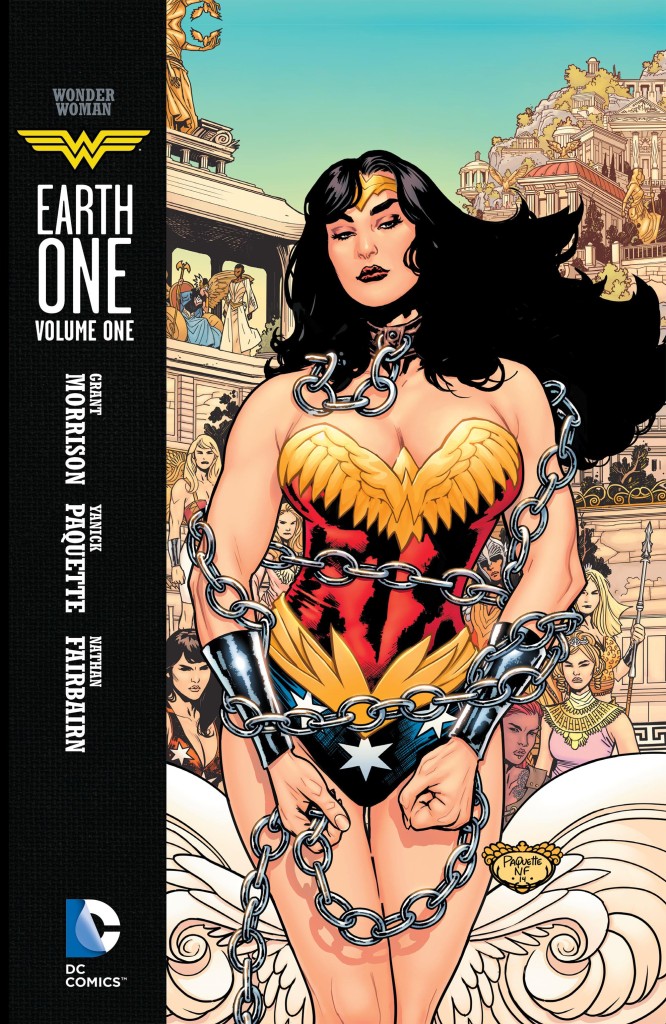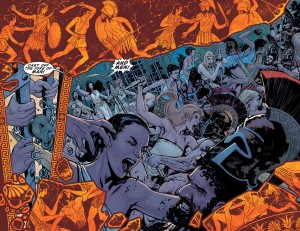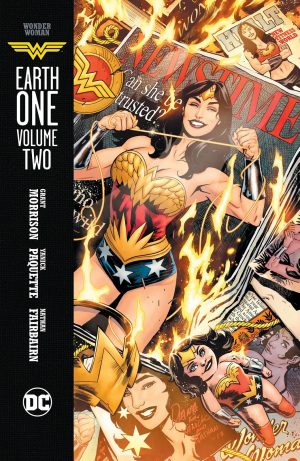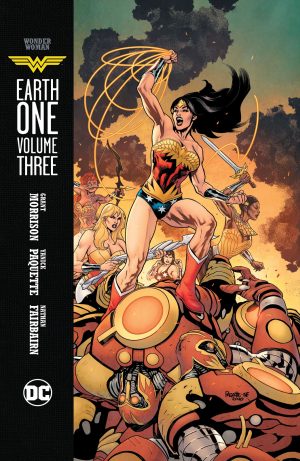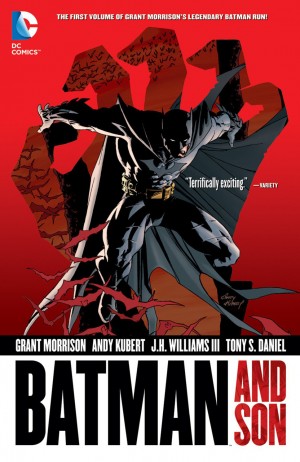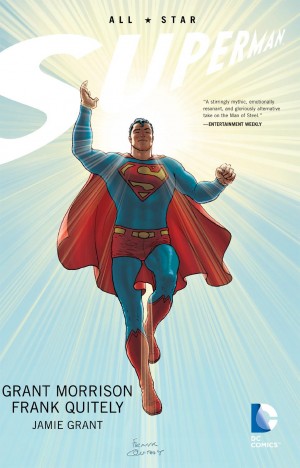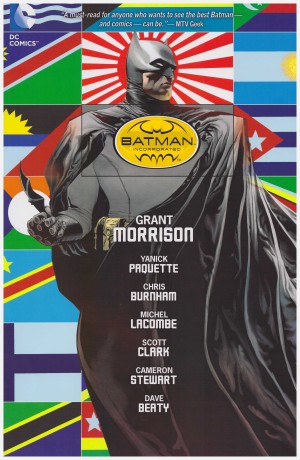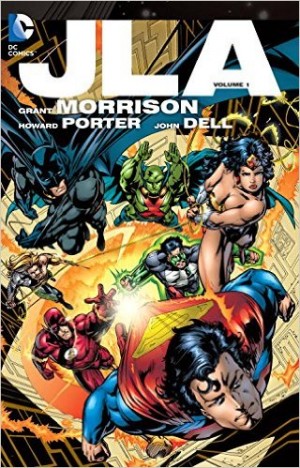Review by Ian Keogh
Grant Morrison’s interpretations of Batman and Superman were creatively stimulating, innovative, and award-winning, yet his involvement with DC’s third iconic character has been minimal beyond her Justice League participation in the 1990s. The perverse, contradictory and plain ridiculous nature of Wonder Woman’s origin feeds directly into several subjects Morrison’s explored over the years, so it seems an ideal match, but the result surprises by not fully engaging.
He’s extraordinarily true to the bizarre amalgam of fetishism and feminism propounded by series creator William Moulton Marston in the 1940s, but Morrison and artist Yanick Paquette aren’t held to the restrictions of that era. They’re able to be more open about matters only hinted at in Marston’s day, so a bacchanalian Amzonian festival encompasses bondage and lesbianism, and Marston’s wacky ideas about feminism and subjugation are given a thorough airing. It’s also noted that Diana has a relationship with another Amazon, which is perfectly logical in societal terms, but given their interaction, entirely unconvincing.
In addition to being faithful to Marston’s vision for Wonder Woman, Morrison is faithful to Greek myths that inspired her society, using narrative voices that comment on and presage events, but his Wonder Woman is capricious and rebellious way beyond the original model. She’s merely curious about the man’s world beyond Paradise Island, and not motivated by anything other than personal desire. This is supposed to be an alternate Wonder Woman, so while that’s hardly a cardinal sin, it’s not the selflessness of the original material otherwise so faithfully adapted. The tone is far better when Wonder Woman reaches our own society, unable to communicate fully, and appalled at sickness and death entirely absent on Paradise Island.
Yanick Paquette’s art is extraordinarily decorative. Rarely can the Amazonian home of Paradise Island have so reflected its name, merging the beauty of nature with technological progression. He weaves classical motifs into his page designs, often separating his illustrations on montage pages via strands of golden lasso, and presents those on a grand scale.
The logic of the undercurrent is that after a bruising encounter with Hercules and his forces, the Amazons retired to their island to create a feminist paradise untainted by men. It’s lasted 3000 years as a joyful society, but within confining rules, and as we learn, it’s founded on a form of reverse rape. Only Queen Hippolyta maintains a monitor on the outside world, and, although, muddy, the ultimate message appears to be that any form of gender or cultural isolation ultimately leads to sterility.
For all the incorporation of Marston’s personal sexuality, his Amazonian society was progressive and Wonder Woman was a spirit of liberation and cultural inspiration, if conflicted via espousing peace via violence. Morrison faithfully updates Marston’s vision in so many ways, yet presents his Amazonian society as restrictive and vengeful. When the foundations of so little else have been shifted, it’s an odd creative choice amid a considered approach.
Despite that, there’s much to enjoy about Wonder Woman: Earth One: the great art, some prime dialogue and whether conceived by Morrison or Paquette, casting Rebel Wilson as Etta Candy is inspired. It cements a personality from the first glance, and she substitutes for the chorus commentary when Wonder Woman visits New York. Those unhappy about the creative direction taken with the character over the previous few years should find solace here. Volume two is even better.
